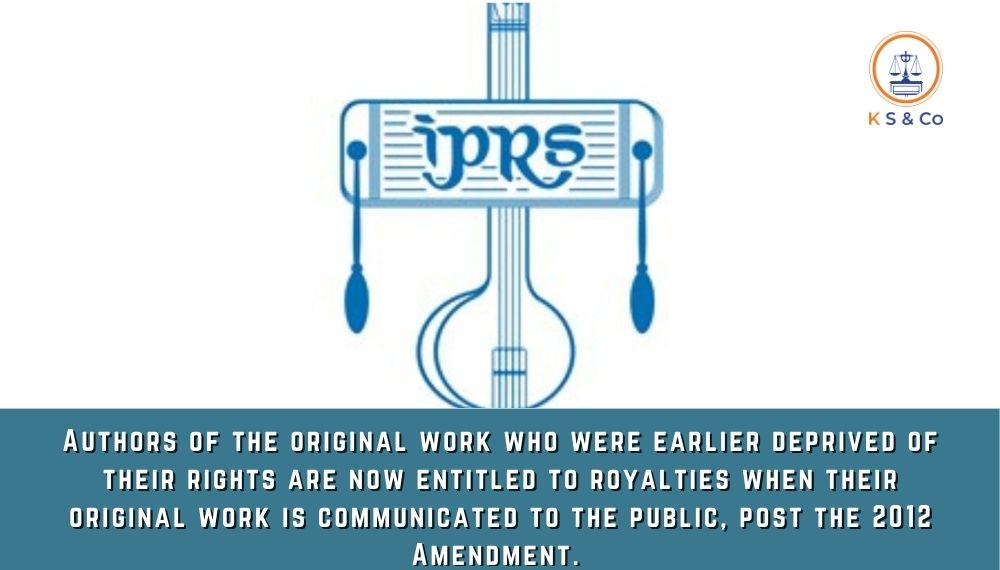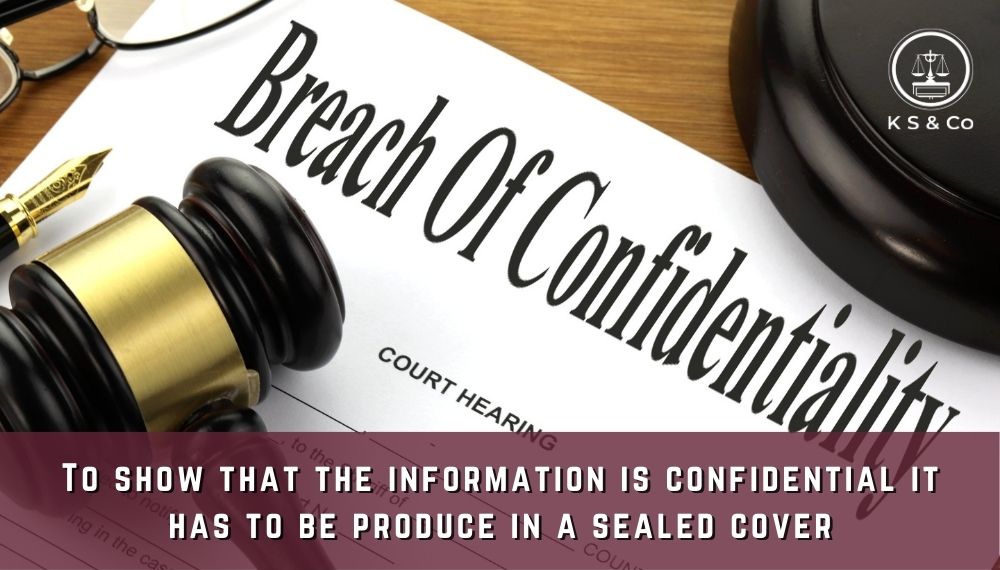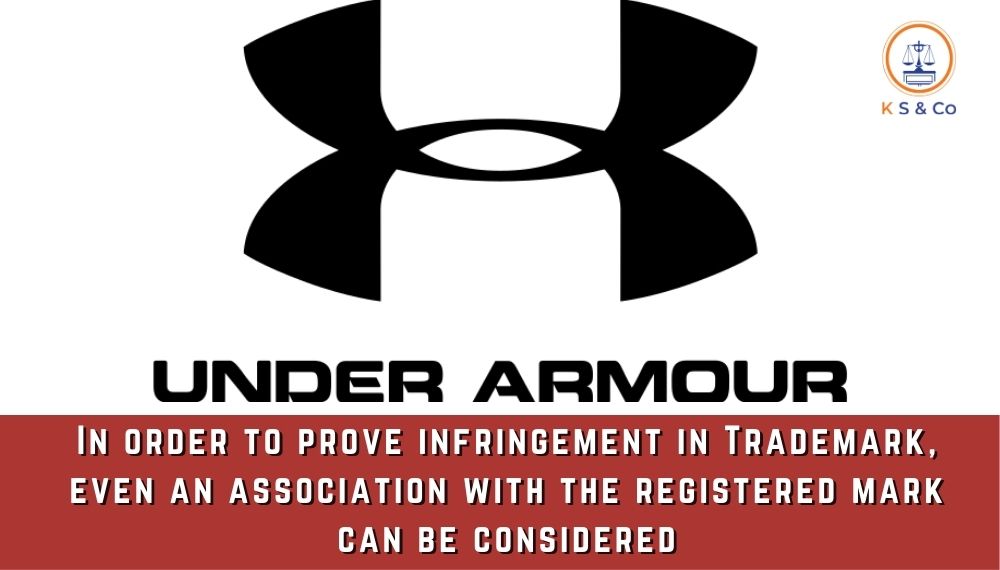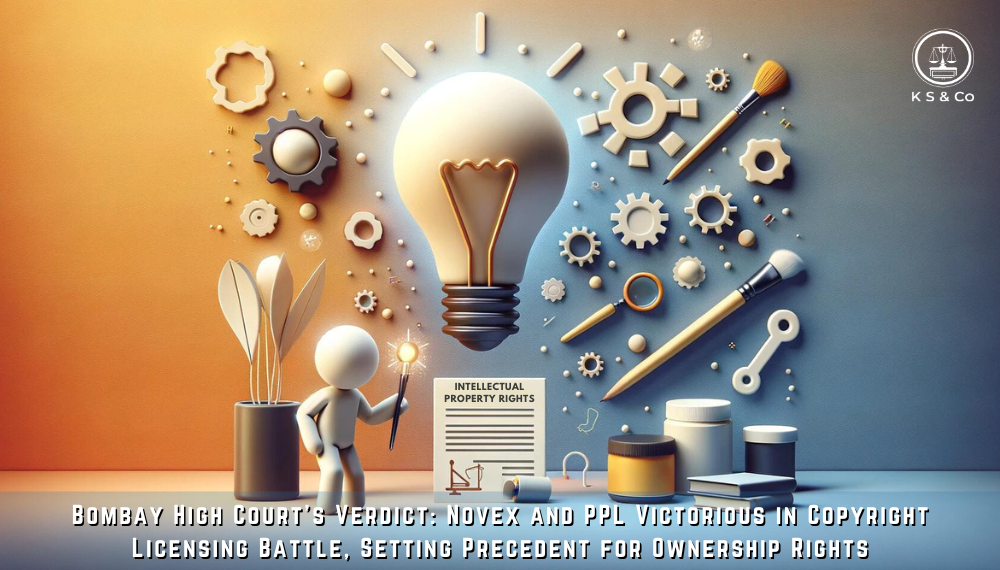CASE TITLE –
Indian Performing Right Society Limited vs. Rajasthan Patrika Pvt. Ltd. and Indian Performing Right Society Limited vs. Music Broadcast Limited (28.04.2023 – BOMHC): MANU/MH/1671/2023
FACTS OF THE CASE –
The Bombay High Court has been approached by the Indian Performing Rights Society Limited (IPRS) to seek interim reliefs against the defendants, primarily on the ground that amendments brought into effect from 21.06.2012 in the Copyright Act, 1957, have completely changed the legal framework concerning the rights of authors of original literary, dramatic, musical and artistic works.
IPRS, which represents these authors of original work who had been denied earlier, in the Supreme Court case of Indian Performing Rights Society (IPRS) Vs. Eastern Indian Motion Pictures Association and others (1997) 2 SCC 820, their rightful claim on royalties on each occasion their original work was being exploited.
It was thus held by the Supreme Court that once the author of the original literary or musical work assigned the same to a producer of a cinematograph film, such author of original works could no longer claim any further right from such producer when the cinematograph film was communicated to the public.
Based on the amendments, which have been made to the Copyright Act 2012, the Plaintiff in the present case has asked the Bombay High Court to revisit the position of the copyright laws with respect to the original author’s rights to claim royalties, when their sound recording is communicated to the public by the defendants. It is relevant to mention here that the defendants are companies engaged in the business of operating FM Radio Broadcast Channels.
ARGUMENTS BY THE PARTIES –
Contentions of the Plaintiff
The Plaintiffs argued that the substantial amendments brought about in the Copyright Act were with the intention to protect the rights of the authors of the original literary and musical works i.e. the underlying works. They further contended that amendments had the effect of reversing the prevailing position of law under the unamended Copyright Act, as interpreted by the Supreme Court in the case of IPRS Vs. Eastern Indian Motion Pictures Association and others (supra) and numerous subsequent judgements. Therefore, they submitted, IPRS being a copyright society is protecting the interests of the authors of the original work who were earlier deprived of their rights, but are now entitled to royalties when their original work is utilized.
Contentions of the Defendant
The Defendant contended that Sections 13 and 14 of the Copyright Act are the main provisions that define the meaning of copyright and subsists how the copyright works. It was submitted that the said two Sections continue to be the same even after amendments in the Copyright Act in the year 2012. On this basis, it was submitted that, so long as these two main provisions were not amended to incorporate and recognize a special or additional right, as claimed by the plaintiff – IPRS, in the authors of original works, the position of law recognized and clarified by the Supreme Court in its judgement of the year 1977 in the case of IPRS Vs. Eastern Indian Motion Pictures Association and others continues to apply and thus the amendment made in 2012 were merely clarificatory in nature and were made to re-inforce the well settled position of law.
ISSUE BEFORE THE COURT –
Whether the addition of provisos to Sections 17 and 18, as also the addition of sub-sections (9) and (10) in Section 19 of the Copyright Act, through the Copyright Amendment Act, 2012, has brought about a change that would result in recognition of additional rights in favor of authors of original underlying literary and musical works.
JUDGMENT –
The court held that the interpretation of the Supreme Court in IPRS v. Eastern Indian Motion Pictures Association stands overturned as the proviso added to Section 17 through the amendment states that the rights of an author of original literary, dramatic, and musical work will be unaffected by the Producer’s ownership of the copyright in a cinematographic film and ownership of the employer on the work made under a contract of employment.
For its interpretation, the Bombay High Court has relied on the Parliamentary Standing Committee Report which too took note of this by remarking that “independent rights of authors of literary and musical works in cinematograph films are being wrongfully exploited by the producers and music companies by virtue of Supreme Court judgment in Indian Performing Rights Society vs. Eastern India Motion Pictures Association (AIR 1977 SC 1443).” and suggested for amendments to remove the infirmity.
The court refused to accept that since the underlying works get subsumed in the sound recordings, the right to receive royalties would be taken away, as such an interpretation will take away the entitlement guaranteed to the authors of underlying work in the 2012 amendment.
The Bombay High Court has also stated that the obligation to pay royalties arises out of copyright and is not defeated by the claim that the obligation to pay royalties is not a “copyright”.
K S & CO COMMENTS
This case law is indeed a well-appreciated effort by the High Court in protecting the rights of an author from the exploitation of their work by producers and music companies. With the amendment of 2012, it is important for authors to continue to actively monitor and enforce their rights in order to ensure that they receive royalties and fair compensation for the use of their copyrighted music.








Leave a Reply